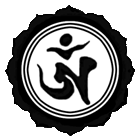โอมชินริเกียว
 | |
| ก่อตั้ง | ค.ศ. 1984 |
|---|---|
| ประเภท | |
สมาชิก | ประมาณ 1,650 คน[1] |
บุคลากรหลัก | โชโกะ อาซาฮาระ (ผู้ก่อตั้งและผู้นำ, ถูกประหารใน ค.ศ. 2018) |
| เว็บไซต์ | aleph |
อาเลฟ (อักษรโรมัน: Aleph; ญี่ปุ่น: アレフ; โรมาจิ: Arefu) ชื่อเดิมคือ โอมชินริเกียว (อักษรโรมัน: Aum Shinrikyo; ญี่ปุ่น: オウム真理教; โรมาจิ: Oumu Shinrikyō) เป็นลัทธิวันสิ้นโลกของญี่ปุ่น โชโกะ อาซาฮาระ (Shoko Asahara) ก่อตั้งเมื่อ ค.ศ. 1984
โอมชินริเกียวถูกพบว่า เป็นตัวการใช้สารซาริน (sarin) โจมตีผู้คนที่มัตสึโมโตะเมื่อ ค.ศ. 1994 และในซับเวย์โตเกียวเมื่อ ค.ศ. 1995 แต่ไม่เคยยอมรับเรื่องดังกล่าว โดยอ้างว่า ผู้กระทำกระทำเองอย่างลับ ๆ ผู้บริหารและสาวกทั่วไปไม่รู้เห็นด้วย อาซาฮาระยังถ่ายทอดเสียงตนเองร้องเพลงยืนยันความบริสุทธิ์ออกวิทยุที่ซื้อสัญญาณจากรัสเซียส่งผ่านมายังญี่ปุ่น[2] แต่ในวันที่ 6 กรกฎาคม ค.ศ. 2018 หลังอุทธรณ์คำพิพากษาครบทุกศาลแล้ว อาซาฮาระกับพวกอีกหกคนก็ถูกประหารด้วยการแขวนคอเป็นการลงโทษในคดีโจมตีซับเวย์เมื่อ ค.ศ. 1995 และคดีอื่น ๆ[3][4] ครั้นวันที่ 26 กรกฎาคม ค.ศ. 2018 พรรคพวกอีกหกคนของเขาก็ถูกประหารตามติดกันไป[5]
หลายประเทศ รวมถึงคาซัคสถาน[6] แคนาดา[7] รัสเซีย[8] สหรัฐ[9] และสหภาพยุโรป[10] ได้ระบุอย่างเป็นทางการให้โอมชินริเกียวเป็นองค์การก่อการร้าย
ใน ค.ศ. 2007 โอมชินริเกียวยุบลงเป็นกลุ่มอาเลฟและกลุ่มฮิการิโนะวะ (Hikari no Wa) สำนักข่าวกรองความมั่นคงสาธารณะ (Public Security Intelligence Agency) ของญี่ปุ่นประกาศเมื่อ ค.ศ. 2009 ว่า อาเลฟและฮิการิโนะวะเป็นสาขาของ "ศาสนาอันตราย" (dangerous religion)[11] และออกประกาศในเดือนมกราคม ค.ศ. 2015 ให้กลุ่มทั้งสองอยู่ในความเฝ้าระวังของทางการเป็นเวลาสามปีหรือกว่านั้น[12] รัฐบาลญี่ปุ่นเลิกเฝ้าระวังฮิการิโนะวะใน ค.ศ. 2017 แต่ยังเฝ้าระวังอาเลฟต่อไป[13]
อ้างอิง[แก้]
- ↑ "オウム真理教対策(警察庁)". Web.archive.org. 25 July 2011. คลังข้อมูลเก่าเก็บจากแหล่งเดิมเมื่อ 2011-07-25. สืบค้นเมื่อ 6 July 2018.
{{cite web}}: CS1 maint: bot: original URL status unknown (ลิงก์) - ↑ Senate Government Affairs Permanent Subcommittee on Investigations (31 October 1995). "VI. Overseas Operations: Global Proliferation of Weapons of Mass Destruction: A Case Study on the Aum Shinrikyo". FAS.org. Federation of American Scientists. สืบค้นเมื่อ 24 December 2015.
- ↑ Ramzy, Austin (5 July 2018). "Japan Executes Cult Leader Behind 1995 Sarin Gas Subway Attack". The New York Times.
- ↑ "Tokyo Sarin attack: Aum Shinrikyo cult leaders executed". BBC News. 6 July 2018. สืบค้นเมื่อ 12 July 2018.
- ↑ https://www.bbc.co.uk/news/world-asia-44962581
- ↑ "East Turkistan Liberation Organization (ETLO)". Globalsecurity.org. สืบค้นเมื่อ 10 July 2018.
- ↑ "Order Recommending that Each Entity Listed as of 23 July 2004, in the Regulations Establishing a List of Entities Remain a Listed Entity". Canada Gazette. Government of Canada. Part II, 138 (24). คลังข้อมูลเก่าเก็บจากแหล่งเดิมเมื่อ 10 December 2014 – โดยทาง justice.gc.ca.
- ↑ Russia bans murderous Japanese sect Aum Shinrikyo as terrorist group, rt.com; accessed 12 July 2018.
- ↑ Fletcher, Holly (19 June 2012). "CFR Backgrounder: Aum Shinrikyo (archived)". Council on Foreign Relations. คลังข้อมูลเก่าเก็บจากแหล่งเดิมเมื่อ 2015-09-23. สืบค้นเมื่อ 2018-08-12.
- ↑ "EU terrorist list". europa.eu. The Council of the European Union.
- ↑ National Police Agency (Japan) (2009), ญี่ปุ่น: "The White Paper on Police 2009; โรมาจิ: 平成21年警察白書; ทับศัพท์: Heisei Nijūichi nen Keisatsu Hakusyo, GYOSEI Corporation, pg. 160.
- ↑ Kyodo, Jiji (24 January 2015). "Surveillance of Aum successor cults extended three more years". Japan Times.
- ↑ "Court lets Aum splinter group Hikari no Wa off surveillance but keeps Aleph in check". Japan Times. 25 September 2017. คลังข้อมูลเก่าเก็บจากแหล่งเดิมเมื่อ 2018-07-20. สืบค้นเมื่อ 12 July 2018.
อ่านเพิ่ม[แก้]
- Shoko Asahara, Supreme Initiation: An Empirical Spiritual Science for the Supreme Truth, 1988, AUM USA Inc., ISBN 0-945638-00-0. Highlights the main stages of Yogic and Buddhist practice, comparing Yoga-sutra system by Patanjali and the Eightfold Noble Path from Buddhist tradition.
- Shoko Asahara, Life and Death, (Shizuoka: Aum, 1993). Focuses on the process of Kundalini-Yoga, one of the stages in Aum's practice.
- Shoko Asahara, Disaster Approaches the Land of the Rising Sun: Shoko Asahara's Apocalyptic Predictions, (Shizuoka: Aum, 1995). A controversial book, later removed by Aum leadership, speaks about possible destruction of Japan.
- Stefano Bonino, Il Caso Aum Shinrikyo: Società, Religione e Terrorismo nel Giappone Contemporaneo, 2010, Edizioni Solfanelli, ISBN 978-88-89756-88-1. Preface by Erica Baffelli.
- Ikuo Hayashi, Aum to Watakushi (Aum and I), Tokyo: Bungei Shunju, 1998. Book about personal experiences by former Aum member.
- Robert Jay Lifton, Destroying the World to Save It: Aum Shinrikyo, Apocalyptic Violence, and the New Global Terrorism, Henry Holt, ISBN 0-8050-6511-3, LoC BP605.088.L54, 1999
- Haruki Murakami, Underground: The Tokyo Gas Attack and the Japanese Psyche, Vintage, ISBN 0-375-72580-6, LoC BP605.O88.M8613, 2001. Interviews with victims.
- Global Proliferation of Weapons of Mass Destruction: A Case Study on the Aum Shinrikyo, [USA] Senate Government Affairs Permanent Subcommittee on Investigations, 31 October 1995. online
- David E. Kaplan, and Andrew Marshall, The Cult at the End of the World: The Terrifying Story of the Aum Doomsday Cult, from the Subways of Tokyo to the Nuclear Arsenals of Russia, 1996, Random House, ISBN 0-517-70543-5. An account of the cult from its beginnings to the aftermaths of the Tokyo subway attack, including details of facilities, weapons and other information regarding Aum's followers, activities and property.
- Ian Reader, Religious Violence in Contemporary Japan: The Case of Aum Shinrikyo, 2000, Curzon Press
แหล่งข้อมูลอื่น[แก้]
- ชินชูเกียว
- โอมชินริเกียว
- ศาสนาในญี่ปุ่น
- ขบวนการศาสนาใหม่ในทางพุทธ
- กลุ่มอะพอคะลิปส์
- องค์การศาสนาที่ก่อตั้งในปี ค.ศ. 1984
- องค์การที่ก่อตั้งในญี่ปุ่นเมื่อปี ค.ศ. 1984
- การก่อการร้ายในประเทศญี่ปุ่น
- องค์การที่ถูกระบุว่าก่อการร้ายในเอเชีย
- องค์การที่ถูกสหรัฐระบุว่าก่อการร้าย
- องค์การที่ถูกสหภาพยุโรประบุว่าก่อการร้าย
- ลัทธิ
